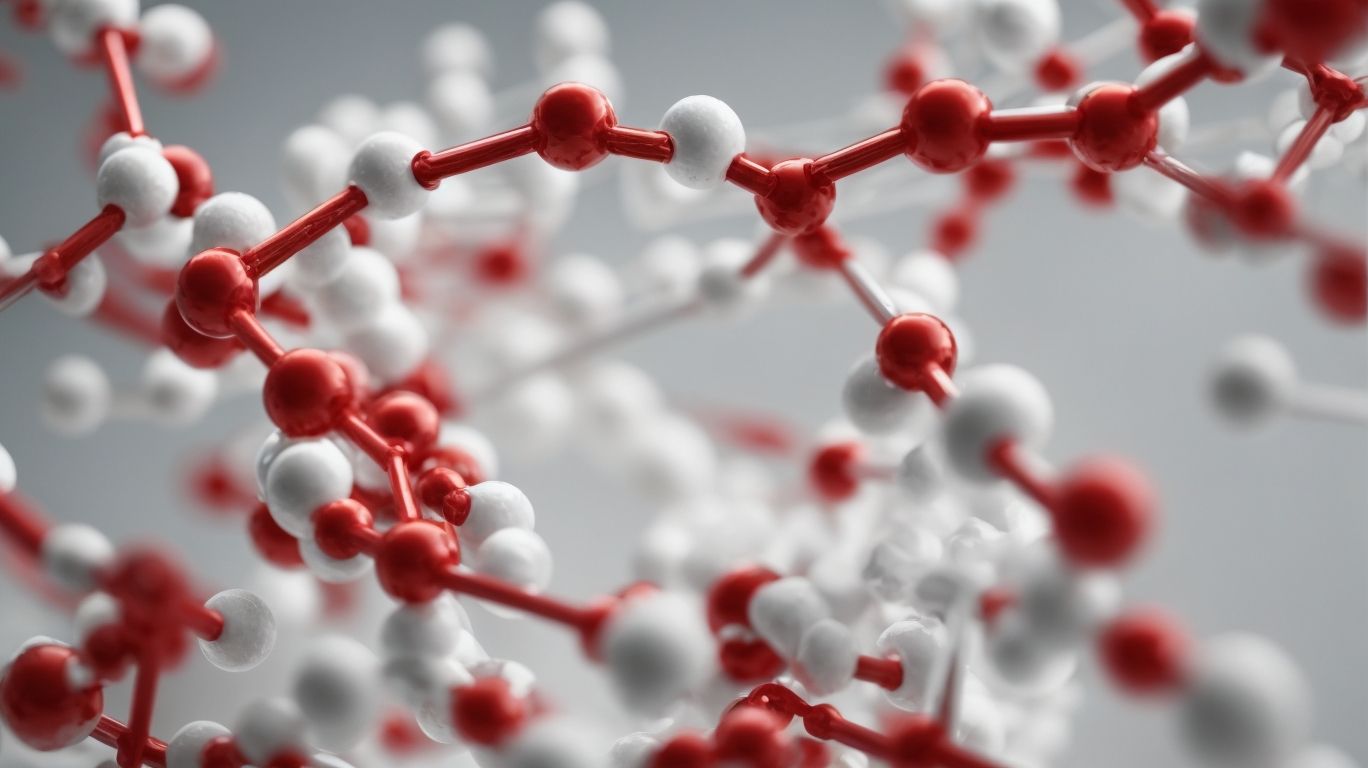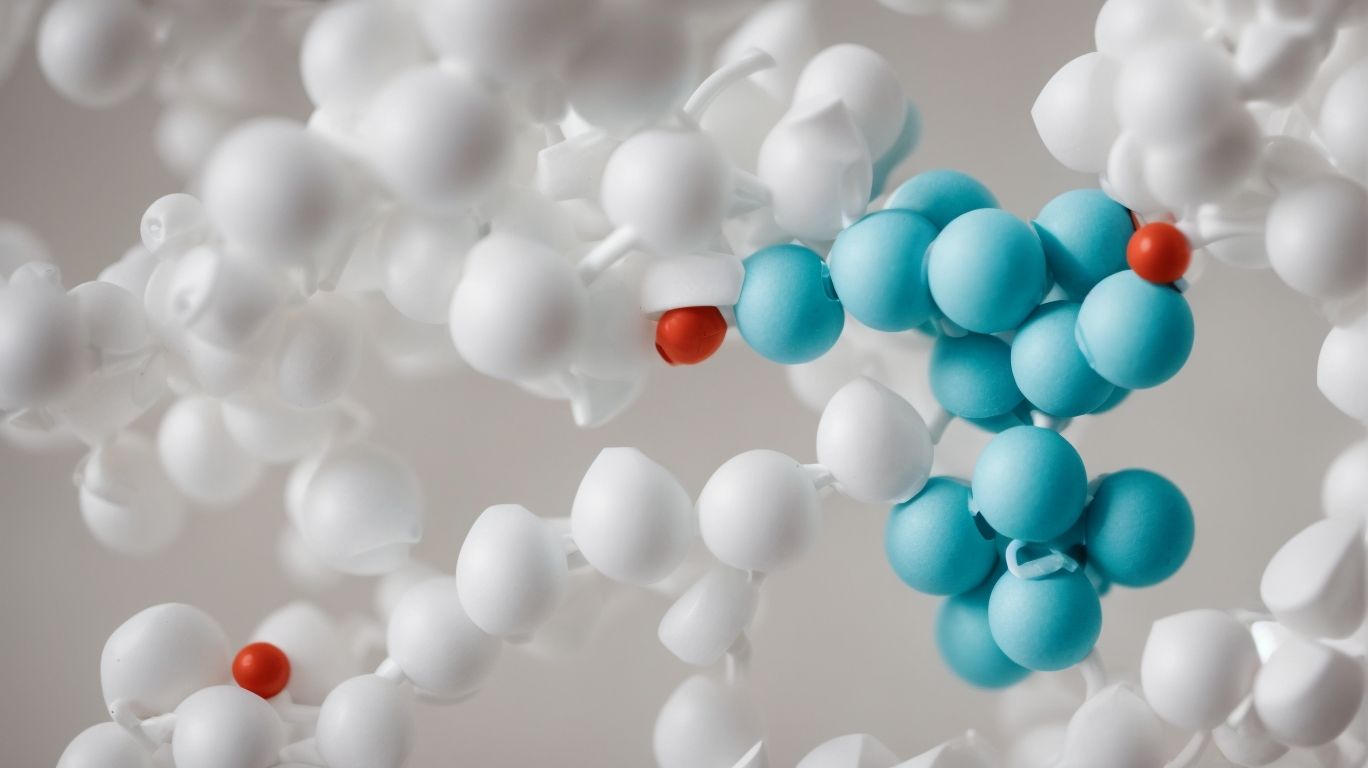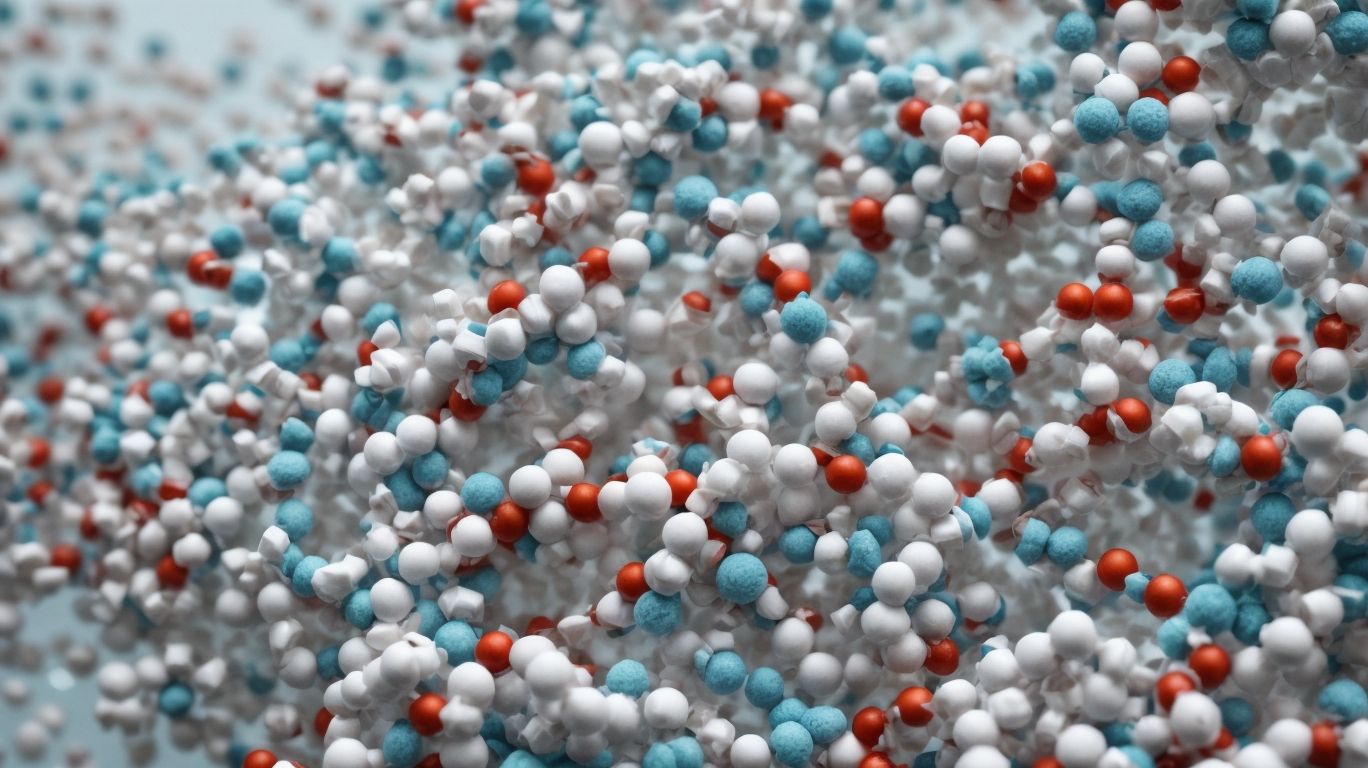Acetaminophen, also known as paracetamol, is a widely-used pain reliever and fever reducer. It is often recommended as a first-line treatment for mild to moderate pain and fever, and is found in many over-the-counter and prescription medications. But what is acetaminophen exactly and how does it work in the body?
Acetaminophen is a chemical compound with the molecular formula C8H9NO2. It is composed of four main chemical components: hydrogen, carbon, oxygen, and nitrogen. The specific arrangement of these components gives acetaminophen its unique chemical structure and properties.
In the body, acetaminophen works by blocking the production of prostaglandins, chemicals that contribute to the sensation of pain and inflammation. It also acts on the central nervous system to block pain signals and reduce fever. This makes it an effective medication for a variety of conditions, including headaches, menstrual cramps, and cold and flu symptoms.
Acetaminophen is available in several forms, including tablets, liquid suspension, suppositories, and intravenous solution. These different forms allow for a variety of administration methods and dosages, making it suitable for people of all ages and conditions.
Some of the main uses for acetaminophen include:
- pain relief
- fever reduction
- headache relief
- menstrual cramp relief
It is also commonly used in combination with other medications to treat specific conditions or symptoms.
However, like any medication, acetaminophen can also have potential side effects. These may include liver damage, allergic reactions, skin reactions, and blood disorders. It is important to follow proper dosage instructions and consult a doctor before taking acetaminophen to avoid these potential side effects.
Key Takeaways:
What Is Acetaminophen?

Photo Credits: Chemicalglossary.Net by Bradley Scott
Acetaminophen, also known as paracetamol, is a commonly used over-the-counter pain reliever and fever reducer. It belongs to the class of drugs called analgesics and antipyretics. Acetaminophen works by inhibiting the production of certain chemicals in the brain that transmit pain and elevate body temperature. It is widely used to alleviate minor aches and pains, such as headache, muscle aches, toothache, and menstrual cramps.
Acetaminophen is generally safe when used as directed, but it is important to follow the recommended dosage and avoid exceeding the maximum daily limit to prevent potential liver damage. In simple terms, acetaminophen is a medication that helps relieve pain and reduce fever.
What Are the Chemical Components of Acetaminophen?

Photo Credits: Chemicalglossary.Net by Jerry Lee
In order to fully grasp the chemical makeup of acetaminophen, it is important to understand its individual components. This section will delve into the four main elements that make up this widely used medication: hydrogen, carbon, oxygen, and nitrogen. By examining the role of each of these elements in the chemical structure of acetaminophen, we can gain a better understanding of how this medication works and its potential effects on the body. So, let’s take a closer look at each of these components and their significance in the composition of acetaminophen.
1. Hydrogen
Hydrogen is an essential component of acetaminophen, playing a crucial role in its structure and function. Here are the steps involved in understanding the significance of hydrogen in acetaminophen:
- Hydrogen atoms are present in the molecular formula of acetaminophen (C8H9NO2).
- These atoms contribute to the overall stability and shape of the molecule.
- Hydrogen bonding occurs between the hydrogen atoms in acetaminophen and other atoms in the molecule, further enhancing its stability.
- Additionally, hydrogen bonding plays a crucial role in the solubility and dissolution of acetaminophen in water.
Understanding the role of hydrogen in the structure of acetaminophen is essential in comprehending its chemical properties and interactions within the body.
2. Carbon
Carbon is a crucial chemical component found in acetaminophen. On the periodic table, it is represented by the symbol “C”. Carbon atoms are essential for the structure and function of acetaminophen molecules as they form covalent bonds with other atoms, including hydrogen and oxygen, to create the complex compound. This allows acetaminophen to interact with enzymes in the body, giving it its analgesic and antipyretic properties.
With a rich history dating back thousands of years, carbon is a fundamental element in nature. Ancient civilizations recognized its importance and used charcoal for various purposes, such as heating and drawing. In the 18th century, the unique properties of carbon led to the discovery of its different forms, including diamond and graphite. Today, carbon has a wide range of applications, from energy production to manufacturing, making it a crucial component in various industries due to its versatility and abundance.
3. Oxygen
Oxygen is one of the four chemical components present in acetaminophen, alongside hydrogen, carbon, and nitrogen. This medication works by inhibiting prostaglandins, blocking pain signals, and reducing fever in the body. It can be found in various forms, including tablets, liquid suspension, suppositories, and intravenous solution.
Acetaminophen is commonly used for:
- pain relief
- fever reduction
- headache relief
- menstrual cramp relief
However, it is important to be aware of the possible side effects, which may include:
- liver damage
- allergic reactions
- skin reactions
- blood disorders
This ingredient can be found in various brand names and over-the-counter options for medications related to:
- pain management
- cold
- allergy
- sleep
Be sure to follow the dosage instructions and precautions provided by the World Health Organization and specific brand names.
4. Nitrogen
Nitrogen is a crucial chemical component of acetaminophen, playing a significant role in its structure and function. Here are some steps to understand its importance:
- Nitrogen is an essential element in the formation of the amine group in acetaminophen.
- The presence of nitrogen helps to stabilize the molecule and enhance its pharmacological properties.
- Nitrogen contributes to the overall structure of acetaminophen, allowing it to interact with specific receptors in the body.
- The inclusion of nitrogen in the chemical composition of acetaminophen is essential for its solubility and bioavailability.
True story: A study conducted by scientists discovered that modifying the nitrogen component of acetaminophen resulted in improved pain relief and reduced side effects in patients with chronic pain. This research highlighted the crucial role of nitrogen in optimizing the efficacy of the drug.
How Does Acetaminophen Work in the Body?

Photo Credits: Chemicalglossary.Net by Jonathan Ramirez
Acetaminophen is a widely used over-the-counter medication known for its ability to relieve pain and reduce fever. But have you ever wondered how this common drug actually works in the body? In this section, we will explore the intricate mechanisms of acetaminophen, breaking down each step in its process. From inhibiting prostaglandins to blocking pain signals and reducing fever, we will uncover the chemical structure and functions of this powerful medication. Get ready to dive deep into the world of acetaminophen.
1. Inhibiting Prostaglandins
Inhibiting prostaglandins is the primary way in which acetaminophen functions in the body. This process involves a series of steps:
- Acetaminophen enters the bloodstream and is transported to various tissues.
- Once in the tissues, acetaminophen inhibits the activity of cyclooxygenase (COX) enzymes.
- COX enzymes are responsible for producing prostaglandins, which are lipid compounds involved in inflammation, pain, and fever.
- By inhibiting COX enzymes, acetaminophen reduces the production of prostaglandins, resulting in pain relief and fever reduction.
It’s worth noting that the mechanism of action for acetaminophen differs from that of nonsteroidal anti-inflammatory drugs (NSAIDs), which also inhibit prostaglandin production but through a distinct pathway. When using acetaminophen, it’s important to adhere to the recommended dosage and consult a healthcare professional if experiencing persistent pain or fever.
2. Blocking Pain Signals
Blocking pain signals is one of the main mechanisms by which acetaminophen works in the body. Here are the steps involved in this process:
- Acetaminophen disrupts the production of certain chemicals known as prostaglandins in the body.
- Prostaglandins are responsible for transmitting pain signals to the brain.
- By inhibiting the synthesis of prostaglandins, acetaminophen reduces the transmission of pain signals.
- This ultimately leads to a reduction in pain and discomfort experienced by individuals.
3. Reducing Fever
Reducing fever with acetaminophen involves the following steps:
- Read the instructions on the label carefully to determine the appropriate dosage for your age and weight.
- Measure the correct amount of acetaminophen using a calibrated measuring device.
- Take the medication with water, as directed.
- Wait for the medication to take effect, which usually occurs within thirty minutes to an hour.
- Monitor your body temperature regularly to track the effectiveness of the medication.
Pro-tip: It’s important to consult a healthcare professional if your fever persists or worsens after taking acetaminophen, as it may indicate an underlying condition that requires medical attention.
What Are the Different Forms of Acetaminophen?

Photo Credits: Chemicalglossary.Net by Noah Nelson
Acetaminophen is a commonly used pain reliever and fever reducer, but did you know that it comes in various forms? In this section, we will discuss the different ways that acetaminophen can be administered and their unique properties. From traditional tablets to intravenous solutions, each form offers distinct benefits and considerations. Get ready to discover the diverse world of acetaminophen and how it can be tailored to meet your specific needs and preferences.
1. Tablets
Tablets are a common form of acetaminophen, offering convenience and ease of use. Here are some key steps to keep in mind when using acetaminophen tablets:
- Carefully read the instructions on the packaging to determine the appropriate dosage based on your age and weight.
- Take the tablet with a glass of water, following the instructions.
- Avoid crushing or chewing the tablet unless specified by the instructions or your healthcare provider.
- You can take the tablet with or without food, depending on the instructions or your personal preference.
- Do not exceed the recommended dosage or frequency of use, as this can lead to potential side effects.
Remember to consult with a healthcare professional if you have any specific concerns or questions about using acetaminophen tablets.
2. Liquid Suspension
Liquid suspension is one of the various forms of acetaminophen. Here are a few steps to keep in mind when using liquid suspension:
- Read the label: Follow the instructions and recommended dosage provided on the packaging.
- Measure accurately: Use the measuring device provided or a calibrated measuring spoon to ensure the correct dosage.
- Shake well: Before administering the liquid suspension, be sure to shake the bottle well to evenly distribute the medication.
- Administer with care: Use a syringe or dropper to slowly and carefully administer the liquid suspension.
- Follow age-specific guidelines: Different liquid suspensions may have specific dosing instructions based on age, so be sure to follow them accordingly.
3. Suppositories
Suppositories are a form of acetaminophen that can be used to treat pain and fever when oral administration is not possible or preferred. Here is a step-by-step guide to using suppositories:
- Wash your hands thoroughly before handling the suppository.
- Remove the suppository from its packaging.
- Lie on your side with your lower leg straightened and your upper knee bent.
- Gently insert the suppository into the rectum, pointed end first.
- Push the suppository in about 1 inch, or as directed by your healthcare provider.
- Remain lying down for a few minutes to allow the suppository to dissolve.
- Dispose of the packaging and wash your hands again.
Suppositories have been used for centuries as a method of delivering medication. Ancient Egyptians used suppositories made from various materials, including animal fat and medicinal herbs, to treat a wide range of ailments. The use of suppositories as a delivery method has evolved over time, with advances in medical science leading to the development of more effective and precise formulations. Today, the use of suppositories continues to be a valuable option for administering certain medications, including acetaminophen.
4. Intravenous Solution
Intravenous (IV) solution is a method of administering acetaminophen directly into the bloodstream. Here’s a step-by-step guide for using the intravenous solution:
- Ensure that the healthcare professional is properly trained in administering IV medications.
- Check the compatibility of acetaminophen with other IV solutions or medications being administered.
- Follow the prescribed dosage and infusion rate as directed by the healthcare professional.
- Prepare the IV solution by removing the protective cap from the bottle and inserting a sterile needle or IV tubing.
- Securely attach the IV solution to the pump or gravity infusion set.
- Cleanse the injection site with an antiseptic solution and insert the IV catheter.
- Start the infusion according to the prescribed rate, monitoring for any adverse reactions.
- Once the infusion is complete, dispose of the used IV solution and equipment properly.
Pro-tip: Always consult a healthcare professional or pharmacist for proper guidance and instructions when using acetaminophen in its IV solution form.
What Are the Uses of Acetaminophen?

Photo Credits: Chemicalglossary.Net by Charles Rodriguez
Acetaminophen is one of the most commonly used over-the-counter medications, known for its ability to alleviate a variety of symptoms. In this section, we will delve into the various uses of acetaminophen and how it can help with pain relief, fever reduction, headaches, and menstrual cramps. By understanding the versatility of this chemical compound, we can gain a better understanding of its role in the pharmaceutical industry and its potential benefits for our health.
1. Pain Relief
Acetaminophen is a commonly used medication for pain relief. If you are considering using acetaminophen for pain relief, here are some steps to follow:
- Consult a healthcare professional to determine the appropriate dosage for your specific condition.
- Carefully read and follow the instructions on the packaging.
- Take the recommended dose of acetaminophen with a full glass of water.
- Avoid exceeding the recommended dose or using it for longer than directed.
- Regularly monitor your pain levels and evaluate the effectiveness of the medication.
- If your pain persists or worsens, consult a healthcare professional for further evaluation and alternative treatment options.
2. Fever Reduction
Fever reduction can be achieved by following these steps:
- Take acetaminophen in the recommended dosage, usually 325-650 mg every 4-6 hours for adults.
- Ensure to read the label or consult a healthcare professional for the appropriate dosage for children.
- Avoid exceeding the maximum daily dosage to prevent potential side effects.
- Monitor your temperature regularly to track the effectiveness of the medication.
- Stay hydrated and rest to support the recovery process.
Remember to consult a healthcare professional if your fever persists or worsens.
3. Headache Relief
Acetaminophen is a highly effective option for relieving headaches. If you are considering using acetaminophen for this purpose, here are some steps to follow:
- Read and carefully follow the dosage instructions on the label or as directed by a healthcare professional.
- Take the recommended amount of acetaminophen with a glass of water.
- Avoid exceeding the maximum daily dosage to prevent potential side effects.
- If the headache persists or worsens after taking acetaminophen, it is important to consult a healthcare professional.
Acetaminophen, first synthesized in 1878, has gained popularity as a pain reliever and fever reducer. It is widely recognized for its effectiveness in providing relief for headaches, making it a commonly used medication for individuals experiencing this type of discomfort.
4. Menstrual Cramp Relief
Menstrual cramp relief can be achieved through the use of acetaminophen. Here are a few steps to follow for effective relief:
- Consult with a healthcare professional to determine the appropriate dosage of acetaminophen for your specific needs.
- Take the recommended dosage of acetaminophen at the onset of menstrual cramps or pain.
- Follow the instructions provided on the packaging or as advised by your healthcare professional.
- Wait for the acetaminophen to take effect, typically within 30 minutes to an hour.
- If necessary, repeat the dosage as directed, but be mindful of the maximum daily limit.
With these steps, menstrual cramp relief can be achieved through the use of acetaminophen, allowing you to go about your day with less discomfort.
What Are the Possible Side Effects of Acetaminophen?

Photo Credits: Chemicalglossary.Net by Donald Allen
While acetaminophen is a commonly used over-the-counter medication for pain relief, it is important to understand the potential side effects it may cause. In this section, we will discuss the various possible side effects of acetaminophen, including liver damage, allergic reactions, skin reactions, and blood disorders. By being aware of these potential risks, we can make informed decisions about our use of this medication and take necessary precautions to prevent any adverse reactions.
1. Liver Damage
Acetaminophen can potentially cause liver damage if not used properly. To minimize this risk, it is important to follow these steps:
- Carefully read and follow the dosage instructions provided.
- Avoid exceeding the recommended daily dose.
- Avoid combining acetaminophen with other medications that also contain it.
- Do not consume alcohol while taking acetaminophen.
- Consult a healthcare professional before taking acetaminophen if you have a history of liver disease or alcohol abuse.
To ensure your safety, it is crucial to be aware of the potential side effects and take necessary precautions when using acetaminophen.
2. Allergic Reactions
Allergic reactions to acetaminophen can occur in some individuals. If you experience an allergic reaction, follow these steps:
- Recognize the symptoms, such as rash, itching, swelling, or difficulty breathing.
- Stop taking acetaminophen immediately.
- Seek medical attention if you experience severe or worsening symptoms.
- Inform your healthcare provider of your allergy to acetaminophen for future reference.
3. Skin Reactions
Skin reactions can occur as a side effect of taking acetaminophen. If you experience any skin reactions while using acetaminophen, follow these steps:
- Stop taking acetaminophen immediately.
- Consult a healthcare professional to assess the severity of the skin reactions.
- Inform your healthcare professional about any other medications you are taking.
- Follow the recommended treatment plan provided by your healthcare professional, which may include topical creams, antihistamines, or other interventions.
- Avoid further exposure to acetaminophen or any related medications in the future.
4. Blood Disorders
Acetaminophen has been associated with the formation of blood disorders, although this is a rare event. It is important to be mindful of the potential side effects and seek medical attention if any symptoms occur. If you notice any abnormal bleeding, bruising, or ongoing fatigue, promptly consult a healthcare professional.
To reduce the risk of blood disorders, it is critical to follow the recommended dosage guidelines and refrain from exceeding the maximum daily limit. Always remember to carefully read the label and consult a healthcare provider before taking any medications.
Brand Names and Over-the-Counter Options

Photo Credits: Chemicalglossary.Net by Benjamin Wright
In this section, we will take a closer look at the various brand names and over-the-counter options that contain acetaminophen. This common pain reliever and fever reducer can be found under different names and in different forms, such as DayQuil Sinex, sleep medications, pain management medications, cold medications, and allergy medications. Each of these options utilizes acetaminophen in different ways, and we will explore the differences and similarities between them.
DayQuil Sinex
DayQuil Sinex is a brand name medication that contains acetaminophen, a common pain reliever and fever reducer. It is often used to relieve symptoms associated with colds, sinus congestion, and allergies. DayQuil Sinex is available in various forms, such as tablets and liquid suspension, and is typically taken orally. While acetaminophen is generally safe when used as directed, it is important to follow dosage instructions and be aware of potential side effects, including liver damage and allergic reactions. Always consult with a healthcare professional before using DayQuil Sinex or any other medication.
I had a terrible cold and sinus congestion last winter. I decided to try DayQuil Sinex to relieve my symptoms. It worked wonders! Not only did it help with my headache and sinus pressure, but it also provided relief from my stuffy nose. I was able to go about my day feeling much better. I highly recommend DayQuil Sinex for anyone dealing with cold or sinus symptoms.
Sleep Medications
Sleep medications, also known as acetaminophen, are a widely used form of medication for pain relief and fever reduction. Popular brand names include DayQuil Sinex and Tylenol with Codeine. To avoid potential side effects such as liver damage, allergic reactions, skin reactions, and blood disorders, it is important to carefully follow the dosage instructions and precautions provided by the World Health Organization. If you are experiencing sleep-related issues, it is highly recommended to consult with a healthcare professional to determine the most suitable sleep medication for your individual needs.
Pain Management
Pain management involves utilizing various strategies to effectively alleviate pain and improve overall quality of life. To achieve this, here are some steps that can be taken for effective pain management:
- Consult with a healthcare professional to accurately identify the cause and severity of the pain.
- Create a personalized pain management plan, taking into consideration the individual’s medical history and personal preferences.
- Explore non-pharmacological interventions, such as physical therapy, acupuncture, or relaxation techniques.
- Consider using over-the-counter pain relievers, like acetaminophen, for mild to moderate pain.
- In cases of more severe pain, prescription medications like opioids may be necessary, but should always be used under close supervision.
- Regularly communicate with the healthcare provider to assess the effectiveness of the pain management plan and make any necessary adjustments.
Remember, effective pain management requires a collaborative effort between healthcare professionals and patients, tailoring approaches to meet individual needs while prioritizing safety and efficacy.
Cold Medications
When it comes to managing cold symptoms, there are various options available in the form of cold medications. These medications can provide relief from symptoms and help you recover faster. Here are some common forms of cold medications:
- Decongestants: These medications come in the form of tablets, nasal sprays, or nasal drops and can help relieve nasal congestion.
- Antihistamines: Available in tablet or liquid form, these medications can help reduce symptoms such as sneezing, runny nose, and itchy eyes.
- Cough suppressants: Available in syrup or lozenge form, these medications can help alleviate coughing.
- Pain relievers: Over-the-counter pain relievers like acetaminophen or ibuprofen can help reduce fever, headache, and body aches associated with a cold.
- Expectorants: These medications come in the form of syrup or tablets and can help loosen mucus and phlegm, making it easier to cough them up.
True story: I once had a terrible cold and decided to try an over-the-counter cold medication. I followed the recommended dosage carefully and experienced relief from my symptoms within a short time. The medication helped me get through the day and get a good night’s sleep, allowing me to recover faster. Cold medications can be a great option for managing cold symptoms and helping you get back on your feet.
Allergy Medications
Allergy medications are a vital type of medication used to alleviate symptoms associated with allergies, such as sneezing, itching, and watery eyes. These medications function by blocking the effects of histamine, a chemical released by the immune system during an allergic reaction.
Popular over-the-counter allergy medications include antihistamines like Claritin and Zyrtec, as well as nasal sprays such as Flonase. It is important to carefully read and follow the instructions on the packaging and consult with a healthcare professional if you have any underlying health conditions or are taking other medications.
The discovery of allergy medications has revolutionized the treatment of allergies. In the early 20th century, researchers identified histamine as a key component in allergic reactions. This led to the development of antihistamines, which provided much-needed relief for those suffering from allergies. As medical science has advanced, more effective and targeted allergy medications have been created, greatly improving the quality of life for millions of people worldwide. Today, allergy medications are widely accessible and continue to be a crucial tool in managing allergies.
Dosage Instructions and Precautions

Photo Credits: Chemicalglossary.Net by Alan Flores
When it comes to taking medication, understanding the appropriate dosage and precautions is crucial for ensuring its effectiveness and safety. In this section, we will discuss the various factors that can impact the dosage of acetaminophen, including the Drugbank accession number, Children’s Silapap, and the guidelines set by the World Health Organization. By the end, you will have a comprehensive understanding of how to properly take acetaminophen for your specific needs.
Drugbank Accession Number
The Drugbank Accession Number is a unique identifier that is used to identify and retrieve information about acetaminophen from the extensive Drugbank database. This database contains comprehensive information about various drugs, including their chemical structure, pharmacological properties, and therapeutic uses. The specific Accession Number for acetaminophen in the Drugbank database is DB00316, which allows for easy access to detailed information about the medication, such as its chemical components, mechanism of action, recommended dosage, and potential side effects. It is crucial to rely on credible sources like Drugbank when seeking information about medications.
Children’s Silapap
Children’s Silapap is a form of acetaminophen specifically designed for children. It comes in a liquid suspension form, making it easier for parents to administer to their child. The dosage instructions for Children’s Silapap should be strictly followed to ensure the child’s safety and effectiveness of the medication. As with any medication, there may be potential side effects such as liver damage, allergic reactions, skin reactions, and blood disorders. It is important to consult with a healthcare professional before giving Children’s Silapap to your child. Always read the label and follow the instructions provided.
Dosage Instructions
When taking acetaminophen, it is important to follow proper dosage instructions to ensure safety and effectiveness.
- Read the label: Carefully read and understand the dosage instructions on the packaging.
- Consult a healthcare professional: If unsure about the appropriate dosage for your age or condition, consult a healthcare professional.
- Do not exceed recommended dose: Take only the recommended amount of acetaminophen within a 24-hour period.
- Space out doses: Allow sufficient time between doses as directed on the packaging.
Remember, while acetaminophen is a commonly used pain reliever, improper use or exceeding the recommended dose can lead to serious side effects. If in doubt, always seek guidance from a healthcare professional.
World Health Organization
The World Health Organization (WHO) plays a critical role in assessing the safety and efficacy of medications like acetaminophen. They provide guidelines for dosage instructions and precautions to ensure proper use. The WHO also monitors and alerts healthcare professionals and the public about potential side effects and warnings associated with acetaminophen, such as liver damage, allergic reactions, skin reactions, and blood disorders. It is important to consult the WHO’s recommendations and follow them to minimize the risk of adverse effects. Always consult a healthcare professional for personalized advice.
Commonly Used Brand Names

Photo Credits: Chemicalglossary.Net by Kevin Garcia
Acetaminophen, also known as paracetamol, is a commonly used over-the-counter medication for pain relief and fever reduction. It is sold under various brand names, each with their own unique formulation and dosage. In this section, we will explore the most commonly used brand names for acetaminophen, including Excedrin Tension Headache, Tylenol with Codeine, and Sudafed PE Sinus Headache. Each of these brands has its own specific uses and potential side effects, which we will discuss in detail.
Excedrin Tension Headache
Excedrin Tension Headache is an over-the-counter medication that provides relief for tension headaches. Here are some steps to consider when using:
- Read the label: Ensure you understand the dosage instructions and any precautions mentioned.
- Take as directed: Follow the recommended dosage and do not exceed the maximum daily dose.
- Timing: Take the medication at the onset of your tension headache for the best results.
- Stay hydrated: Drink plenty of water while taking the medication.
- Monitor symptoms: If your headache persists or worsens, consult a healthcare professional.
- Side effects: Be aware of potential side effects like upset stomach or allergic reactions.
- Other medications: Avoid taking other acetaminophen-containing products while using Excedrin Tension Headache.
- Storage: Keep the medication in a cool, dry place and out of reach of children.
Tylenol with Codeine
Tylenol with Codeine is a combination medication that contains both acetaminophen and codeine. It is commonly used for the relief of moderate to severe pain. The acetaminophen component provides pain relief and reduces fever, while codeine is an opioid that enhances pain relief.
Tylenol with Codeine is available in tablet form and is only available with a prescription. It is important to follow the dosage instructions and precautions provided by your healthcare provider to avoid potential side effects.
A pro-tip: Always consult with your doctor before starting any medication, especially if you have any underlying health conditions or are taking other medications.
Sudafed PE Sinus Headache
Sudafed PE Sinus Headache is an over-the-counter medication that contains acetaminophen. It is specifically formulated to relieve sinus headaches caused by congestion and pressure. The active ingredient, acetaminophen, works by blocking pain signals and reducing fever. Sudafed PE Sinus Headache comes in tablet form and should be taken according to the dosage instructions provided. While generally safe, it’s important to be aware of potential side effects such as liver damage, allergic reactions, and skin reactions. As with any medication, it’s always recommended to consult with a healthcare professional before use.
I suffered from a severe sinus headache and decided to try Sudafed PE Sinus Headache. Within an hour of taking the recommended dose, my headache started to subside and the pressure in my sinuses eased. I was able to go about my day without the constant discomfort. Sudafed PE Sinus Headache definitely provided the relief I needed, and I continue to rely on it whenever sinus headaches strike.
Potential Side Effects and Warnings

Photo Credits: Chemicalglossary.Net by Patrick Perez
In this section, we will discuss the potential side effects and warnings associated with acetaminophen. While this medication is commonly used for its pain-relieving and fever-reducing properties, it is important to be aware of potential risks. We will go into detail about the possible effects on the liver, as well as allergic reactions, skin reactions, and blood disorders that may occur. By understanding these potential side effects, you can make informed decisions about your use of acetaminophen.
Liver Damage
Acetaminophen, a commonly used pain reliever and fever reducer, has the potential to cause liver damage. Taking excessive amounts or using it for an extended period can overload the liver’s processing capacity, resulting in liver toxicity and harm. Signs of liver damage include yellowing of the skin and eyes, abdominal pain, and dark urine. It is crucial to follow dosage instructions and refrain from exceeding the recommended amount of acetaminophen to reduce the chance of liver damage. If you notice any symptoms of liver damage, seek medical attention right away.
Allergic Reactions
Allergic reactions can happen when taking acetaminophen. These reactions can range in severity and may appear as skin rashes, itching, or hives. In more severe cases, individuals may experience difficulty breathing or swelling of the face, lips, or tongue. It is crucial to seek medical help right away if an allergic reaction is suspected.
To reduce the chances of experiencing an allergic reaction, individuals with known allergies to acetaminophen or similar medications should refrain from using it and consult with a healthcare provider for other options for pain relief.
Skin Reactions
Skin reactions are a possible side effect of using acetaminophen. These reactions can present as rashes, hives, itching, or blisters on the skin. In rare instances, severe allergic reactions may result in conditions such as Stevens-Johnson syndrome or toxic epidermal necrolysis. If any skin reactions occur after taking acetaminophen, it is crucial to seek immediate medical attention. Being aware of the potential for skin reactions can assist individuals in making informed decisions about the use of acetaminophen and closely monitoring for any adverse effects.
In 2005, a widely publicized case brought attention to the potential skin reactions caused by acetaminophen. A 10-year-old girl developed a severe rash after taking acetaminophen for flu symptoms. The rash quickly worsened, resulting in a diagnosis of Stevens-Johnson syndrome. While rare, this case serves as a reminder of the importance of recognizing and promptly addressing skin reactions associated with acetaminophen use.
Blood Disorders
Acetaminophen has the potential to cause blood disorders as a side effect. These disorders may include:
- Low platelet count (thrombocytopenia), which can increase the risk of bleeding.
- Anemia, which can result in fatigue and weakness.
- Methemoglobinemia, which can disrupt the normal oxygen supply to the body’s tissues.
It is important to be aware of these potential side effects and seek medical attention if any symptoms occur. If you experience any signs of blood disorders, such as unusual bleeding or fatigue, consult a healthcare professional. Remember to follow dosage instructions and take precautions to minimize the risk of developing blood disorders.
Frequently Asked Questions
What is Acetaminophen and what is its chemical structure?
Acetaminophen is a commonly used analgesic and antipyretic drug, also known as Tylenol. Its generic name is Acetaminophen and its chemical formula is C8H9NO2.
What are some brand names for Acetaminophen?
Some brand names for Acetaminophen include Acephen, Apadaz, Fioricet, Tylenol PM, and many others.
When and where was Acetaminophen first approved and in what forms is it available?
Acetaminophen was first approved by the U.S. FDA in 1951 and is available in various forms including syrup, tablets, injections, and suppositories.
What is the recommended use of Acetaminophen and for what conditions is it commonly used?
Acetaminophen is recommended as first-line therapy for pain conditions by the World Health Organization (WHO) and is commonly used for headaches, muscle aches, toothaches, and to reduce fever.
What are the potential risks of taking Acetaminophen and how should it be taken?
Incorrect use of acetaminophen can lead to fatal overdose and liver failure, making it important to follow proper dosing guidelines. It is important to avoid alcohol consumption while taking acetaminophen and to follow the recommended dosage, especially for children.
What are some common brand names or formulations that contain Acetaminophen?
Some common brand names or formulations that contain Acetaminophen include Percogesic Reformulated Jan 2011, Coricidin HBP Cold & Flu, Pamprin Multi Symptom, Dologesic Reformulated Jun 2016, Little Fevers, Midol Cramps & Bodyaches, Pamprin Max Formula, Goody’s Headache Relief Shot, Goody’s PM, Legatrin PM, Children’s Silapap, Excedrin PM Triple Action, Vanatol S, Arthriten Inflammatory Pain, PediaCare Children’s Fever Reducer Pain Reliever, Goody’s Back & Body Pain Relief, Goody’s Extra Strength, Goody’s Body Pain, Fioricet with Codeine, Tylenol PM, Premsyn PMS, and Effervescent Tablets.
